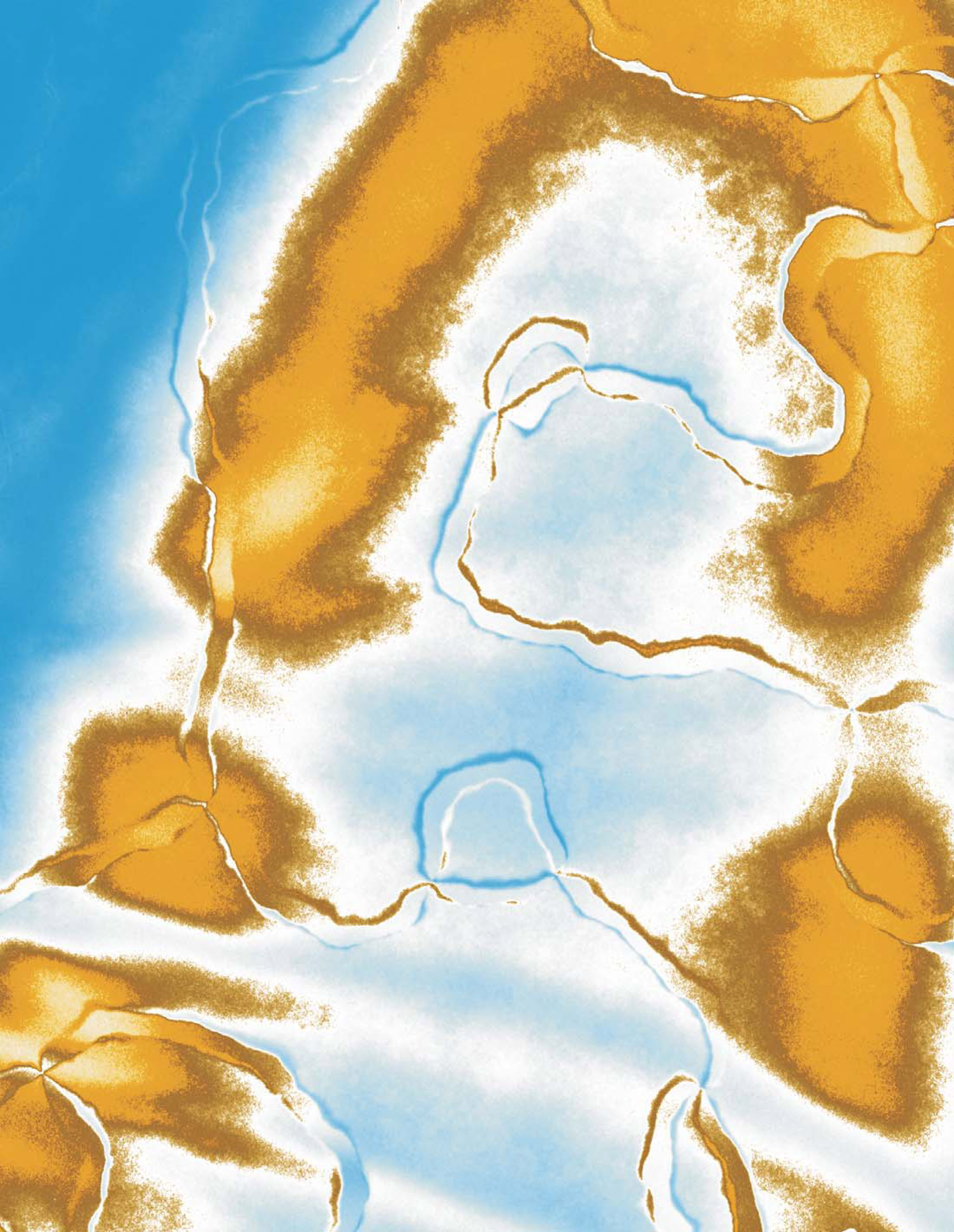Multiferroic vortices
DOI: 10.1063/1.3502561
Complex oxides, comprising multiple metallic cations and oxygen, exhibit several intriguing and exploitable properties, including ferroelectricity (with spontaneously ordered electric dipole moments), ferromagnetism (with spontaneously ordered magnetic moments), and ferroelastics (with spontaneously ordered strain arrangements). As described by Nicola Spaldin, Sang-Wook Cheong, and Ramamoorthy Ramesh on page 38, experimentalists and theorists are learning how to make materials called multiferroics that combine two of those properties—ferroelectricity and magnetism—in a single phase. The coupling between multiferroics’ electric and magnetic properties is one active area of research; the materials’ interfaces, such as domain walls, also present fascinating physics.
The yttrium manganite (YMnO3) shown in this colored transmission electron microscope image is a multiferroic with a hexagonal crystal structure. Below a critical temperature, it undergoes a spontaneous structural instability that leads to three structural domains, each of which can support two directions of ferroelectric polarization. Against the background variations in the image, the boundaries between the domains stand in sharp relief, casting blue, white, and brown shadows. The boundaries meet in cloverleaf arrangements that cycle through all six domain configurations. Occurring in pairs, the cloverleafs can be viewed as vortices and antivortices, in which the cycle of domain configurations is reversed. Vortices and antivortices are topological defects: Even in a strong electric field they won’t annihilate. (T. Choi et al., Nat. Mater. 9, 253, 2010 ).
To submit candidate images for Back Scatter, visit http://www.physicstoday.org/backscatter.html

Image courtesy of Yoichi Horibe and Sang-Wook Cheong.

